M-Systems (v1)
M-Systems – Illustrated Summary
A Digital Theory of Everything
By Nick Ray Ball 4th April 2011 to 14th February 2017

M-Systems are a set of 17 different powerful components, which collectively work to create a virtual global network designed to evolve into a powerful economic system called ‘S-World’
(Sienna’s World – The Sienna Foundation).
The name ‘M-Systems’ is in respect of the discipline in applied mathematics & theoretical physics called M-theory. Whilst most people have not heard of this specific discipline, most people have heard of ‘The Theory of Everything.’ Even if it is only to know of the film by the same name about the life and works of professor Stephen Hawking.
Professor Hawking believes M-theory to be the best ‘TOE’ (Theory of Everything) model we have.
In his words…
(Professor Hawking’s quotes within this book are sometimes condensed from longer paragraphs.)
“Ever since Newton and especially since Einstein, the goal of physics has been to find a unified Theory of Everything.
M-Theory is the only candidate for a complete theory of the universe.
M-Theory is the unified theory Einstein was hoping to find.”
Before we go further into the physics of things, let’s see a basic overview of S-World’s M-Systems.
And note that whilst S-World wishes to make affiliate companies super competitive and profitable, S-World itself is a not for profit entity, designed to use ripple effects and synergies to create a system that empowers the poor equally with the rich, solves environmental problems, protects endangered animals, and in general seeks to create a picture of the future where we would like our children to live.
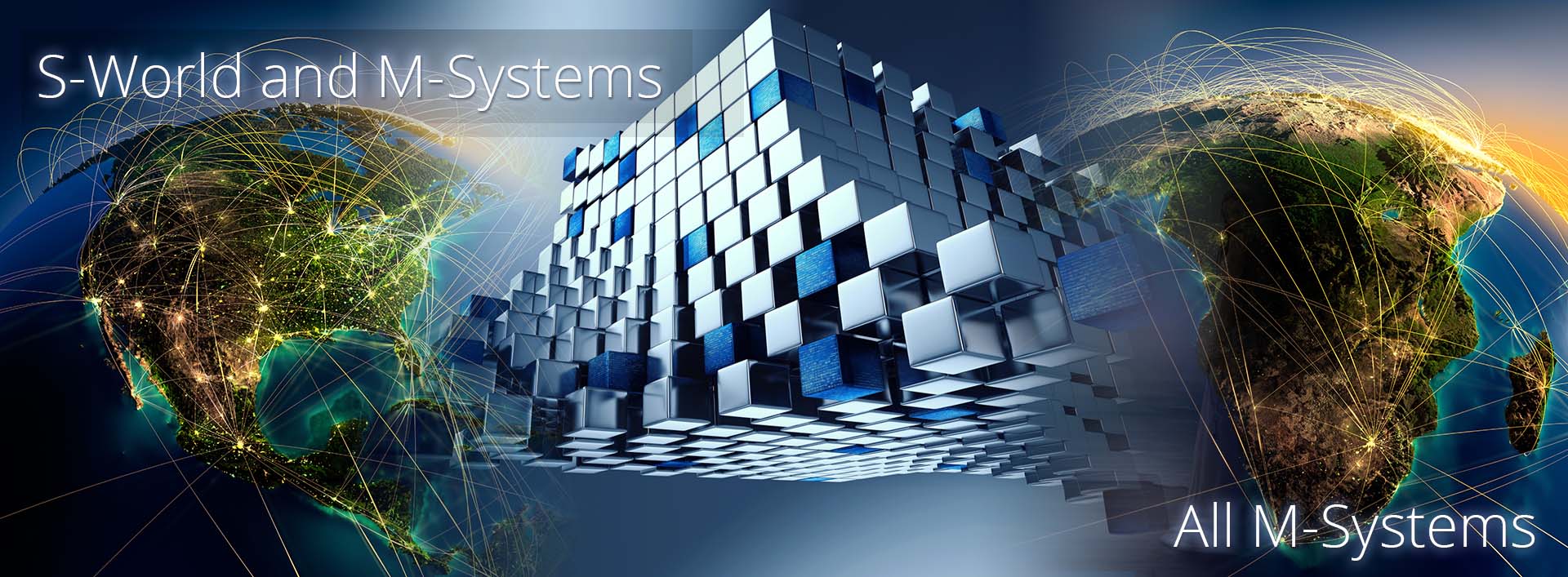
M-System 0. The GGW-String (S-World) receives a percentage of each company’s gross profit and uses it in different ways (that we call shapes) to achieve network ambitions.
M-System 1. S-Web and the TFBMS give many small business and individuals: websites, business software, AI sales systems, database connectivity, and the type of branding, marketing, SEM & SEO usually only afforded by large companies.
M-System 2. The A&B String calculates ripple effects and presents synergies and opportunities.
M-System 3. The Susskind Boost considers different ways to boost S-World companies profit.
M-System 4. The Peet Tent & QSF assess applications and if satisfied grants the business a licence, after which businesses that use our systems correctly* are protected from failure.
M-System 5. POP is a point for annual company profitability, after which additional profit is invested into creating new business or grand networks (large resort style property developments), and special projects of ecological, economical, scientific or philanthropic intent.
M-System 6. The Theory of Every Business creates ecological safe grand networks and special projects (Note that grand networks in locations of abject poverty are special projects).
M-System 7. S-World Virtual Networks, a simulated universe & within a virtual world which mirrors our own. A social and business network, which is fun to use, great for real estate and travel companies, which will showcase S-World’s grand network developments to their buyers.
M-System 8. S-World Films creates films and TV series which product place S-World concepts.
M-System 9. Super Coupling seeks to grow the network in a safe but rapid fashion.
M-System 10. RES (Revenue x Efficiency x Spin) looks to keep money (network credits) within the network and increase the speed of spending, so increasing the overall S-World economy.
M-System 11. QuESC learns from S-World member’s actions and presents new opportunities.
M-System 12. S-World UCS turns S-World Virtual Networks into a mass online multiplayer game.
M-System 13. UCS Voyagers make a copy of the game and send it forwards in time so members can simulate business in the future, then choose to follow the opportunities (or not) in real time.
M-System 14. Angel Cities create five future weigh-stations from 2020 to 2080 with a mandate to design a future world we would want for our children’s children. Then work backwards creating ripple effects and strings of opportunities in our time that will lead to the future simulations.
M-System 15. Angel POP creates grand networks as twinned opportunities, a rich location like California is twinned with a location in abject poverty like Malawi. There are many models, but the first is to create a significant amount of small to medium companies in California and twin the business with a grand network resort development called ‘Lake Malawi.’
M-System 16. Angelverses considers philanthropists & big businesses.
M-Systems – Introduction
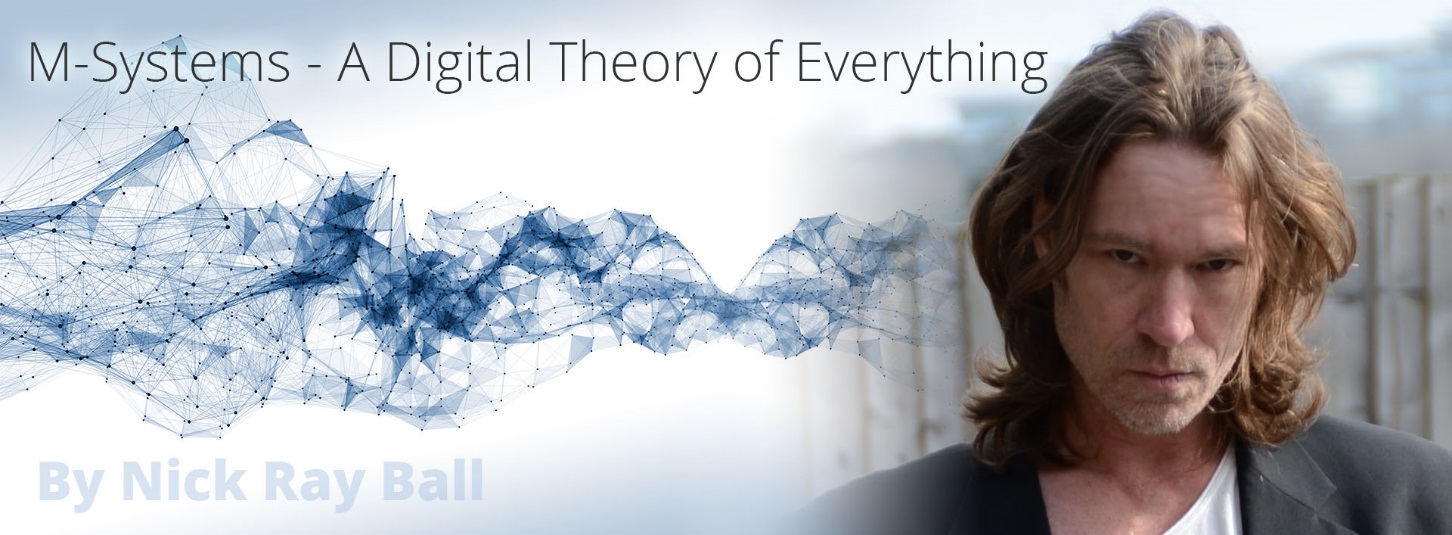
Hi, I’m Nick Ray Ball. I have a passion for complex systems, networks, and the laws of nature. I have created a design for a network called S-World, within which are 17 different system designs that simulate the laws of nature as described by the discipline M-Theory.
From 2011 to 2013 I researched and wrote a series of four theoretical large scale macroeconomic papers/books called ‘American Butterfly,’ in which a business network called ‘S-World’ strengthens in the USA and creates economic ripple effects across the globe.
The theory was simple at heart and was in book one titled: ‘The Theory of Every Business.’ The less simple facet of American Butterfly was the POP investment principle, and how in books two and three I started to simulate the effects of the laws of nature and in particular string theory.
Since writing American Butterfly, I have spent the last four years working hard to integrate the very large macro-economic theory into a very small real-world S-World microeconomic network. And equally hard creating working prototypes, real business and the ‘S-Web’ CMS framework’ , which is a system for creating large scale real estate websites like Villa Secrets.com, simply, easily and at lightning pace. Once we complete the business & marketing software (The TFBMS AI) we will have a disruptive product. A product that will disrupt the market, or markets; as once perfected it we shall adapt it to other industry types.
To present this theory simply, I have created a series of 1 page “quick-summaries.” Over time I hope that the physicists, economists, and business scientists mentioned within will create their own papers. For instance, ‘The Peet Tent by Dr Peet,’ or ‘Susskind on The Susskind Boost.’
For this introduction, in terms of physics, I have focused on the work of Stephen Hawking as he is known and respected by just about everyone on the planet.
The work is business and economics, enhanced by software, theoretical physics, and game theory. The first academic order is to verify that the work is a good use of theoretical physics. M-Systems does not directly use M-theory’s higher mathematics instead it simulates the principles, and ‘games them out’. I can imagine physicists reading and scratching their heads. So, I shall quickly move into a summary of these effects. The key word is ‘simulate,’ whereby we see the outcome of a principle in theoretical physics and then simulate it within the system so the same effect is created within S-World network.
16 Points of M-Theory Similarity (2017 List)
By Nick Ray Ball Autumn 2012 to 12th February 2017
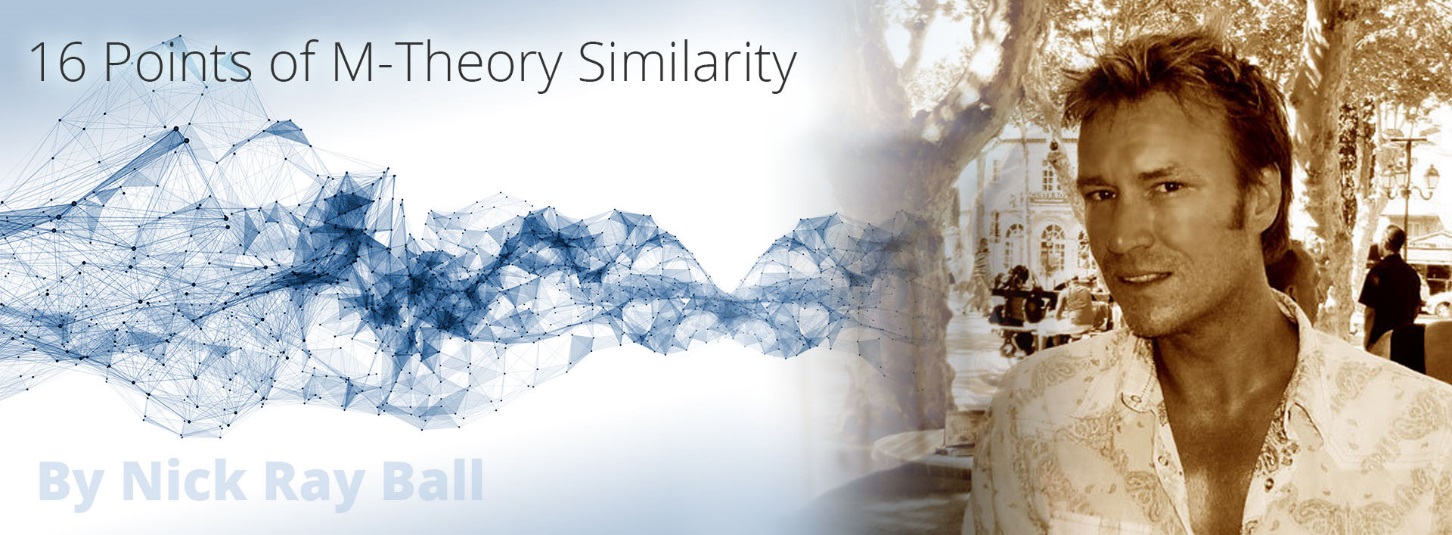
1. Different Shapes and Behaviours of Strings > M-System 0 – The GGW-String
2. Butterfly & Ripple Effects > M-System 2 – Ripple Effects and The M&B String
3. Renormalization > M-System 2 – The M&B String
4. Boosting Strings > M-System 3 – The Susskind Boost
5. String Feynman Diagrams > M-System 4 – The Peet Tent
6. Monte Carlo Effect & Uncertainty Principle > M-System 4 – The Peet Tent -QSF
7. Chaos Theory & Rounding Errors > M-System 5 – POP Investment Principle
8. Low (& maybe high) String Coupling > M-System 9 – Super Coupling [2]
9. Conservation of Energy > M-System 10 – RES Conservation
10. The Butterfly Effect > M-System 11 QuESC 2012
11. Newtonian Space & General Relativity> M-System 11 – QuESC 2017
12. Whatever Can Happen, Does! > M-System 13 – UCS Voyagers
13. Feynman Sum Over Histories & Light Cones > M-Systems 14 – Angel Cities
14. M-Systems in 10 dimensions plus time > M-System 15 – Angel POP Dimensions
15. String Quantum Mechanics > M-System 15 – Angel POP Laws
16. Supersymmetry > M-System 16 – Angelverse Supersymmetries
M-Systems Architecture, Ripple Effects & Circular Events
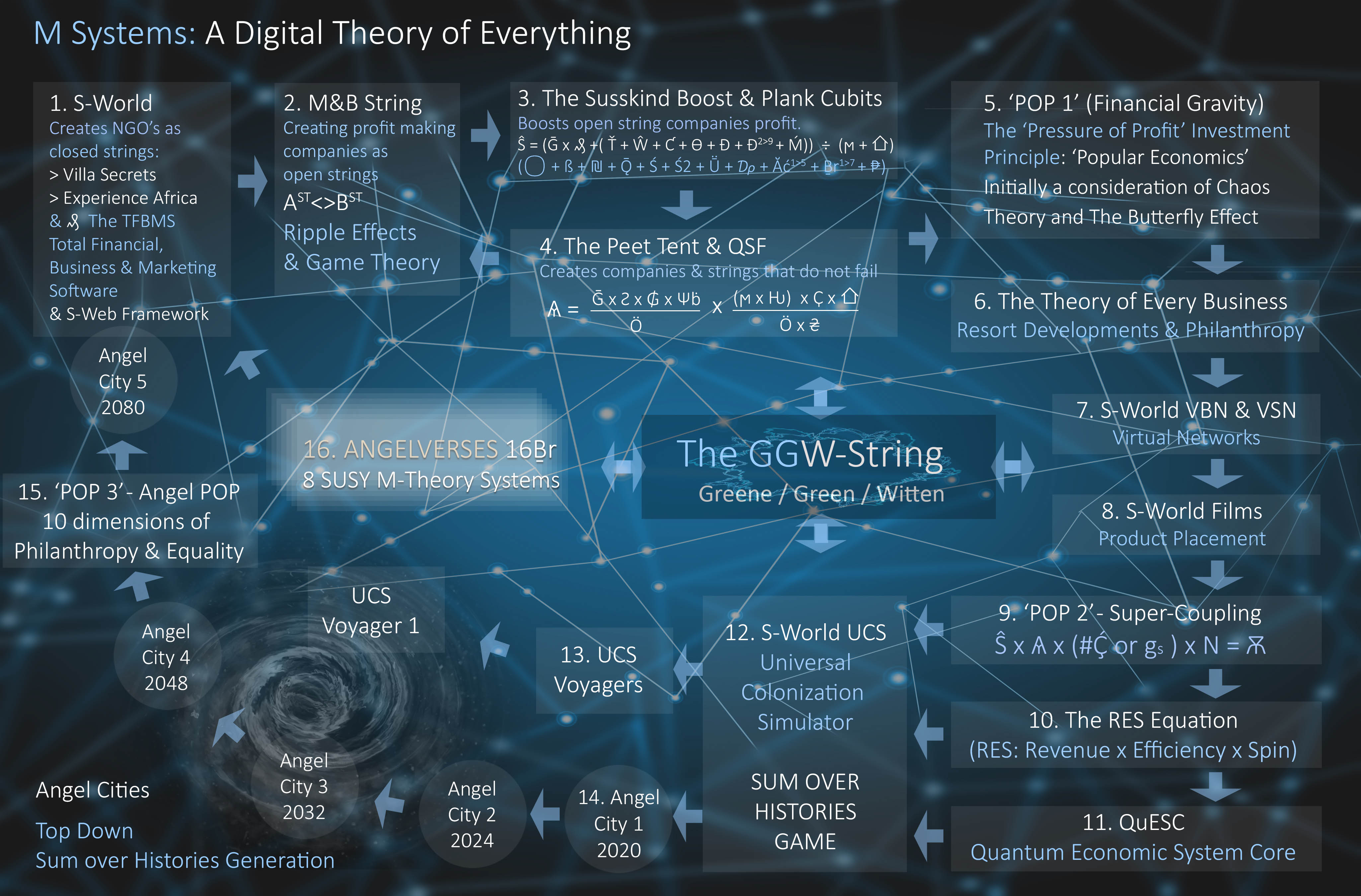
Above we see the M-Systems design/system architecture, 16 different components flow from system to system, create ripple effects, and become circular as the 16th System (and most other systems) have a direct effect on the first, and so it starts again but with greater initial input.
At the base of the system is the fundamental ‘The GGW String’ which applies to all systems. Please consider System 1. S-World – Villa Secrets creates thousands of small and medium sized companies, which all contribute financially to a ‘not for profit’ organization called ‘The Sienna Foundation’ or as it abbreviated ‘S-World.’
The most fundamental way we mimic M-theory is to consider S-World as a string called The GGW -String (Greene, Green Witten), which changes its shape to create different effects.
One shape is M-System 3 ‘The Susskind Boost’ (Ŝ) which considers ways we can boost a company’s profit, such as the TFBMS software (₰) or tenders and contracts (Ť).
Another shape is System 4 ‘The Peet Tent’ which is a shape of the string for distressed companies, where we see the income from the collective, used to boost to distressed companies.
Another shape is ‘Give Half Back’ which may, under the right conditions, use the funding of the GGW-String towards creating special projects of philanthropic, ecological or scientific intent.
S-World – Give Half Back
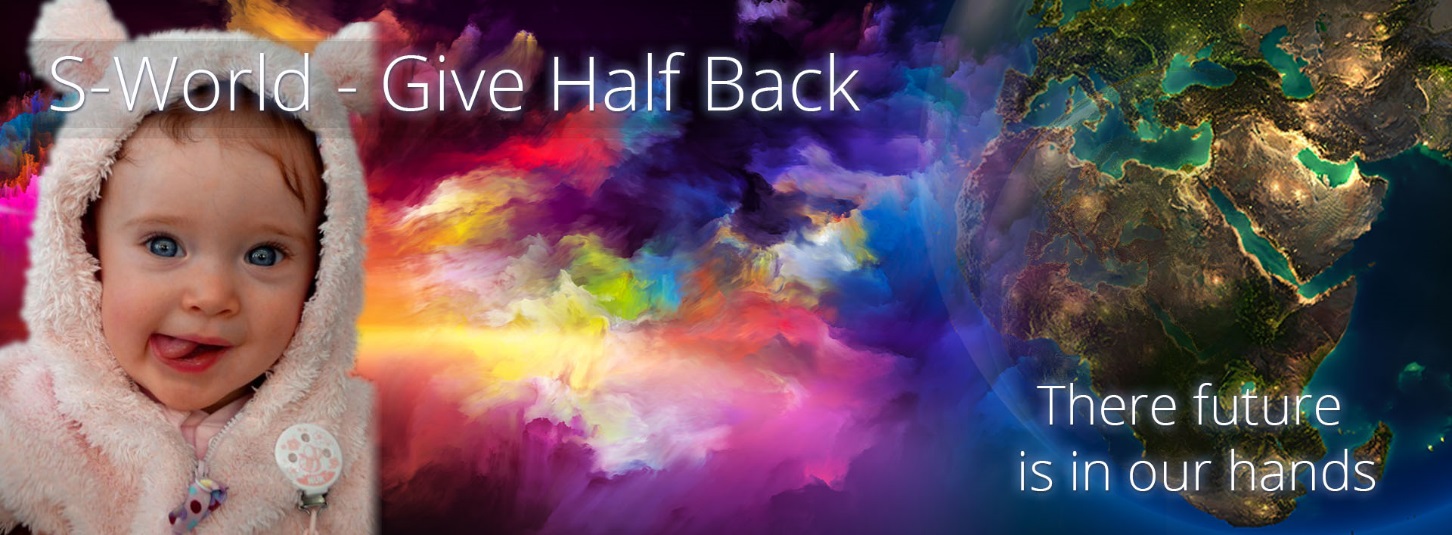
Give Half Back is a fundamental law of the network. In fact, it’s fair to say that it was the first law of the network, inspired by my Angel, Sienna Skye pictured above.
In February 2011, after just over a decade of working towards a global network product, I created the first S-World business plan. Which can be found as the begginning chapter of the first S-World research site. The business plan offered some really wild figures if the systems and software, which were designed for travel, could be adapted to other business types.
The business plan was sent to the company I had been gravitating towards for several years, Sir Richard Branson’s VIRGN GROUP. It took but a few weeks to be assessed as worthy for presentation to the senior committee. And it would have been, had I not had a spiritual eureka moment that lead to the ideas, that now six years later are described in M-Systems.
Give Half Back was a simple and selfless idea. I would keep half the business, but use all the money I would receive for the benefit of others, endangered animals, and our planet. This system imposed no obligation for businesses or investors, who I wished to be as profitable as possible. Hence, ‘Give Half Back’ was for me ‘Give All Back,’ not dissimilar to Mark Zuckerberg’s recent decision to give back 99% of his fortune via the The Chan Zuckerberg Foundation.
Give Half Back grew into www.S-World.biz, American Butterfly, Angel Theory, M-Systems and is now being further developed as “African Butterfly.” There are currently two different ‘Give Half Back’ models that can run concurrently. POP sees that when companies are profitable, after a specific point (called the POP point), additional profit is invested into creating new companies and grand networks. Half of which are in poorer countries and so bringing prosperity, medical centres, education, and pride to nations in abject poverty.
The GGW-String model, is that S-World be ‘not for profit’ and receive a share of each company’s gross profit. Which at first it uses to boost the contributing company’s profitability, but once that company is healthy, profitable and will progress well simply due to the improvements made in the TFBMS AI Software, S-World may use the income for Angel Theory – Special Projects.
I should point out that now, having designed S-World to be a non-profit, and made the GGW String and POP, I intent to have small stakes in some of the companies, so it’s no longer a completely selfless philanthropic exercise, just a good one.
The Butterfly (2017) – Implementation Strategy
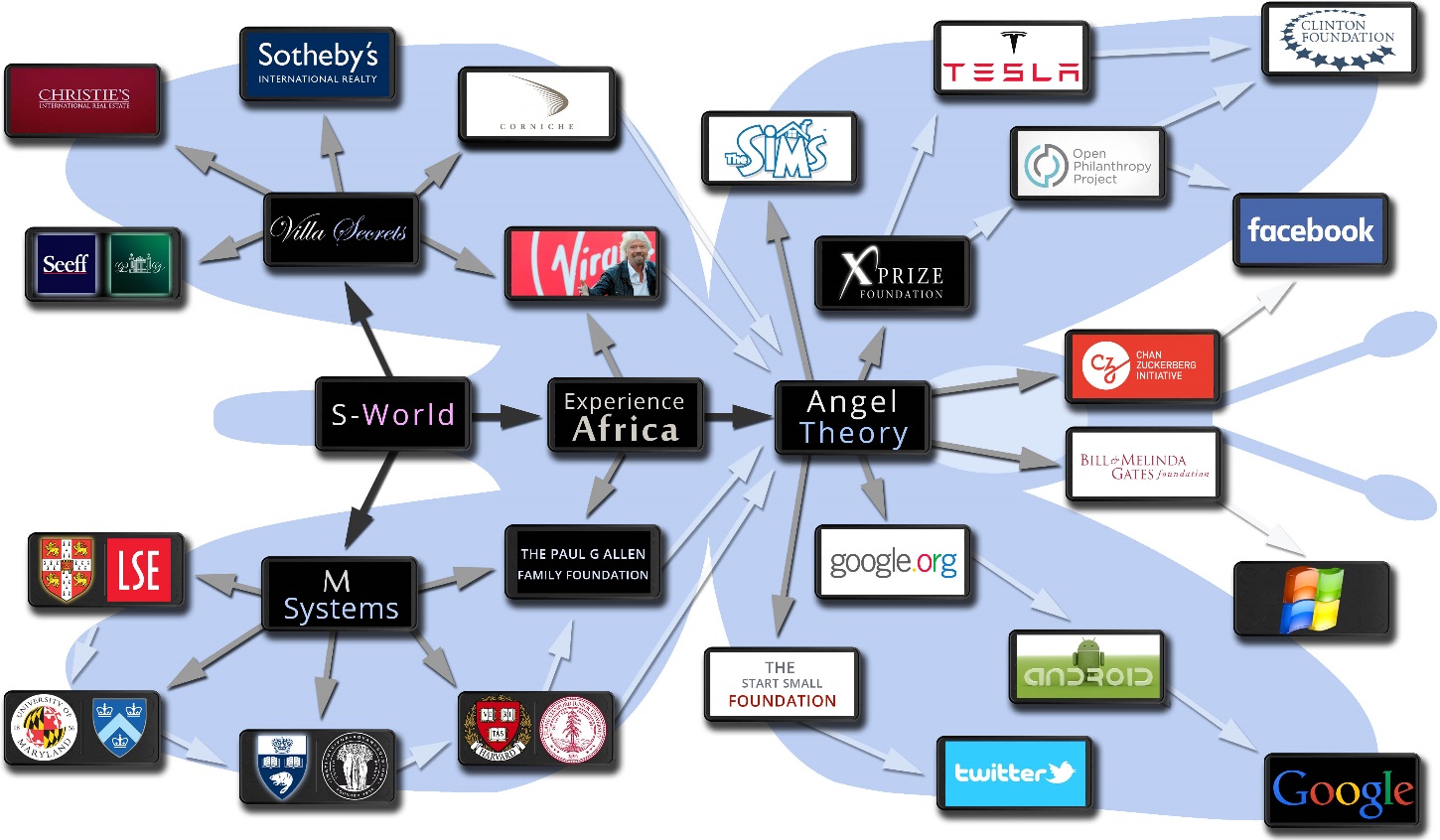
Above we see ‘The Butterfly,’ S-World’s implementation strategy, which as one can see is greatly influenced by ‘Give Half Back’ and philanthropic investment.
Initially starting with S-World, we follow the black arrows to our four subsidiaries: Villa Secrets, Experience Africa, Angel Theory, and M-Systems. Where after we follow the grey arrows to the different companies, universities and foundations who are directly in the field of study of the subsidiaries. Where after we continue to the technology foundations and then their companies.
We will first work on the left side of the butterfly, as in doing so, we make ‘Angel Theory’ stronger. Villa Secrets will approach real estate companies. M-Systems will be presented to physicists and Angel Theory Special Project 1 ‘Experience Africa’ will attempt to reach Virgin’s Sir Richard Branson and Paul G Allen, the Microsoft co-founder who loves elephants, supports technology based solutions to philanthropic problems, and importantly; appreciates ripple effects.
Before moving to the right-hand side of the butterfly, we would like to show that real estate companies are willing to invest in ‘Villa Secrets’ and that physicists, then economists appreciate M-Systems, and Experience Africa is assisted. Where after Angel Theory can be presented to technology foundations, and in particular to the Chan Zuckerberg and Bill and Melinda Gates foundations, both of whom were inspirations in the formative year of 2011.
I have chosen philanthropists before their companies, as it is hoped we can collectively look at the best way to create S-World as a force for good as well as a business opportunity. In addition, it may well be the only way to get such business rivals to work collectively, as is desired for the S-World Network.
I have not added celebrities, public figures, or royals. However, as S-World is a philanthropic venture it is greatly desired that they will embrace S-World and Angel Theory.
Company Structure (Organogram)

There are currently six different M-Systems designs for S-World companies that will mostly have different owners per “The Butterfly,” all connected via a contract with S-World.
The most developed company is Villa Secrets so we shall follow its path below. There will be different Villa Secrets parent companies per location and Industry, which create opportunities for companies and investors to own small to medium Villa Secrets companies (or franchises)

Villa Secrets investors, and in fact all S-World companies agree to contribute to the S-World GGW-String and POP Investment which funds new companies and Grand Networks…
As the network grows, there will come a point when the Villa Secrets network becomes big enough to market small, then large, then grand property developments, called Grand Networks.

When the Grand Networks themselves become massive, they can in turn support many service and retail companies within the grand network. So, the network spreads into many different industries as many different companies. This is known as The Theory of Every Business. (M-System 6).
Game Theory – The Nash Equilibrium
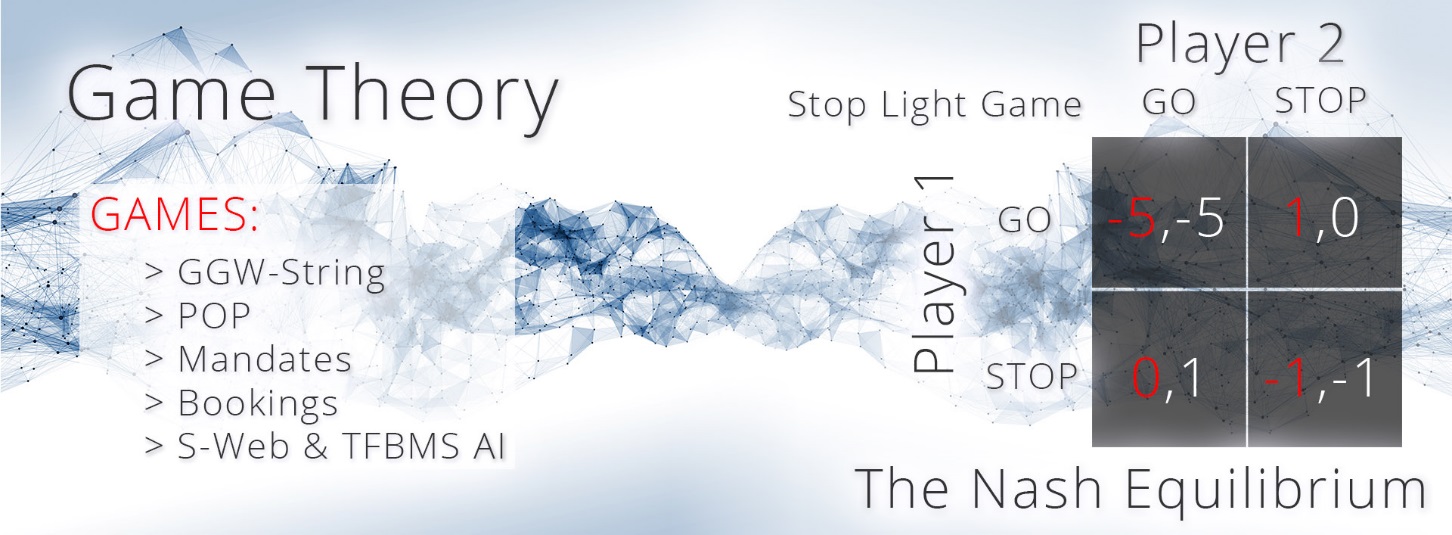
Game theory is “the study of mathematical models of conflict and cooperation between intelligent rational decision-makers.” Game theory is mainly used in economics, political science, psychology, computer science as well as logic.
The Nash Equilibrium was theorised by Professor John Nash, as portrayed in one of my favourite films A Beautiful Mind. Which amongst other works, won John Nash a Nobel Prize for economics.
The Nash Equilibrium differs from normal game theory, as it looks at ‘win/win’ scenarios. Specifically, a Nash Equilibrium is a rule or law that no one would want to brake, even in the absence of effective enforcement.
We have ‘gamed out’ many different S-World scenarios and looked to find Nash Equilibriums. For instance, the contribution to S-World and the GGW-String.
At 25% of gross profit (even thought this is only an equivalent of a 4.5% franchisee fee) it’s not something one would pay if one did not have to. So, we brake it in half, making 2 sets of 12.5%.
Set one is for mandate costs, making new websites for each villa mandated by each company and marketing them. If one likes the mandate plan (which is a fundamental part of the Villa Secrets plan), this is a cost that would need to be paid regardless . However, by keeping things in house and using our technology, one effectively gets twice the return one would have received from a profit based marketing and web development company. If one is excited by our mandate plan, this expense is essential to it, and so would be paid regardless of enforcement or contract.
The second 12.5% becomes the cost of S-Web framework and software development, in the form of the TFBMS AI. We would say that our plans are well tested, well presented, and well-reasoned. When we look at the various scenarios we have created, we see that in 2019 a good TFBMS AI more than doubles profit. In addition is the general idea that 12.5% is a fair price to pay to keep up with competitors in the vacation rentals industry that greatly relies on technology and the web in general. Thus, if the TFBMS was created per agreement and was as effective as predicted, this 12.5% would be a price most would choose to pay regardless of enforcement or contract.
Once the network is massive and is contributed to by many, costs will lower. But as our technology will improve, we could deliver the same or better service at a lower price, and at this later stage, we may allocate surplus revenue to different S-World special projects.
David & Goliath
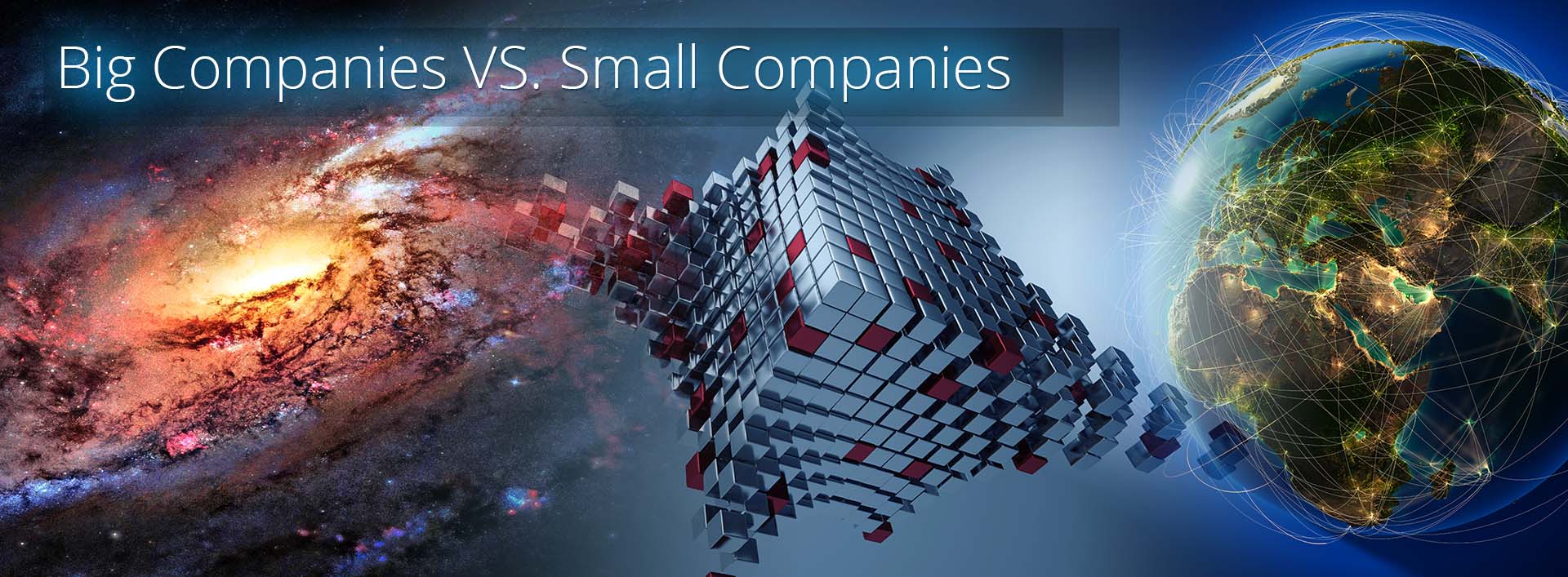
Another fundamental property of the S-World Network is simply that people try harder to make a business succeed if they own it.
Looking first from an extreme macro-economic position, if there are 8 billion people on this planet, then in an ideal S-World there would be 1 billion companies, with 2 billion company owners, and a further 2 billion well monitored staff who provided for 4 billion dependents.
Consider this, if given the same systems and marketing, would 4 billion company owners and well monitored staff outperform 500 million business owners and well monitored staff and 3.5 billion not so well monitored staff? Of course they would!
Not to mention the advantages in advancing human potential
Utopian dream?? Well, not necessarily. If one was to use the game theory & m-theory approach and skip to M-System 9. POP 2 – The Super Coupling Singularity, one will see a simple model based on the POP Investment Principle on how this could occur by 2072 starting with just one Villa Secrets company. Adding the rule that via POP, after 3 years each company funded the start-up of 2 new companies per year and all companies created followed the same rules, then we would see that Utopian dream realised.
But practically in my experience with Cape Villas.com, an SME (small to medium enterprise) I ran from 2002. By 2010 we were the market leaders and had a high staff model, which was not very profitable.
By 2015 I had instead created 2 smaller owner run models, which received half the income but profits increased by more than 400%. Showing that (in this example) people work far harder &/or cleverer if they own the company they work for.
M-Systems – Influenced by Professor Hawking
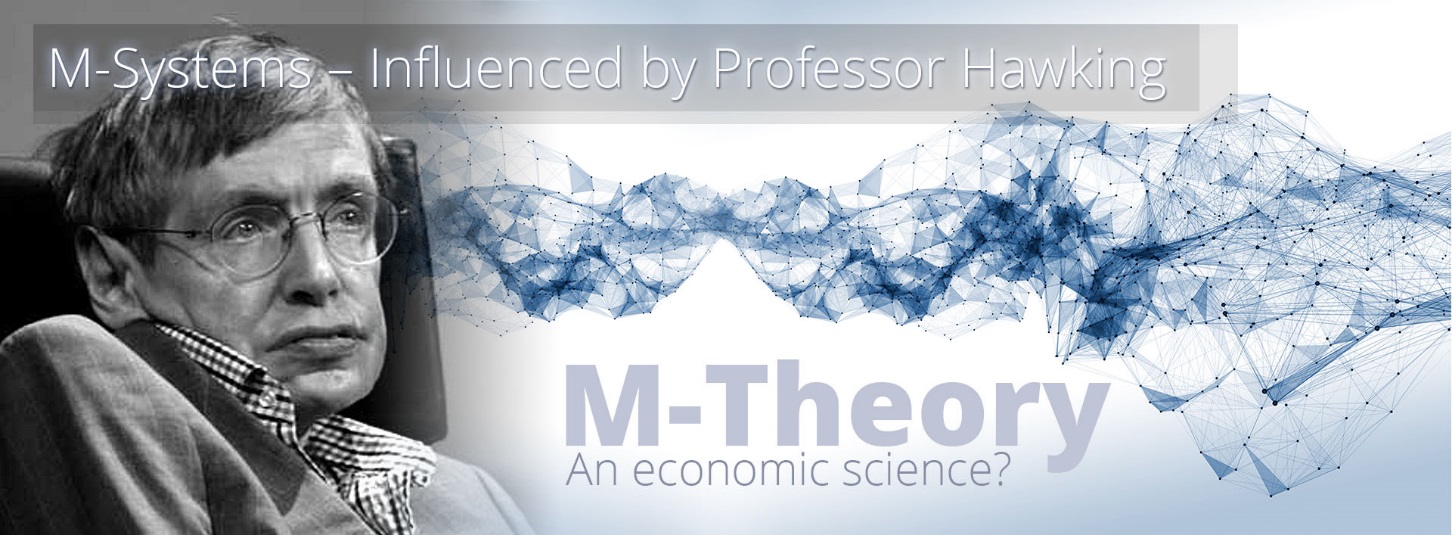
It took quite a while for me to start using Professor Stephen Hawing’s work and books as an influence. However, once I went down that rabbit hole and got to hear about black holes, quantum physics and general relativity through Hawking’s words, things started to come together.
There were already many considerations of how to simulate qualities of string theory into S-World’s business and economics. However, once this was mixed and with Hawking’s work it created a complete theory. To the point now where for some, one really can’t tell whether it is a Theory of Every Business or a Theory of Everything…
The first Hawking influenced paper I wrote was on the 8th May 2016 called The Hawking-Camelia Paradox, which did not look at detail, rather the general idea that one can consider TOE (Theory of Everything) math (or at least principles) outside of physics. One can be fairly certain Hawking and Camelia did not mean economics and business science. But you know math is math…and if the glove fits, you can wear it.
“If we discover a complete theory of the universe, it should in time be understandable by everyone and not just to a few scientists. And when that happens all of us will be able to discuss the why, rather than the how.”
Professor Stephan Hawking
“I don’t believe that the ultimate theory will come by steady work along existing lines. We need something new!”
Professor Stephan Hawking
“When you’re stuck chasing a certain answer, you often discover that all it took to find the answer was to look at the same problem from a different angle.”
Dr Giovanni Amelino-Camelia
Professor Hawking on M-Theory
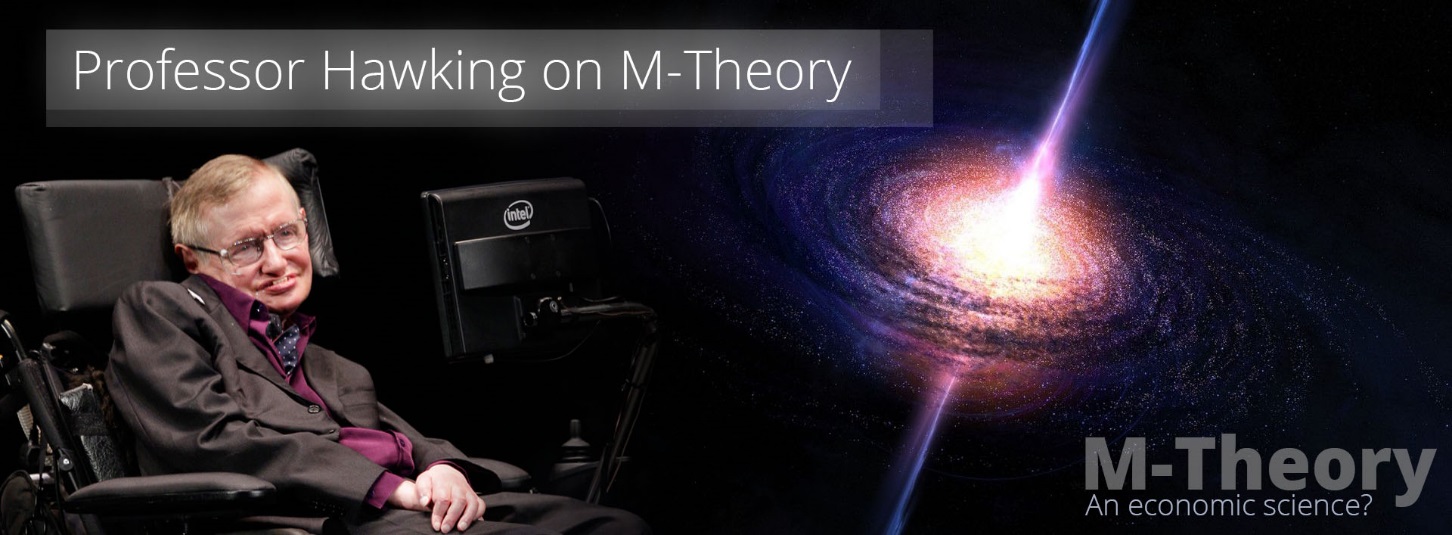
M-Theory is the multiverse (many universes) version of string theory and a framework for several disciplines in theoretical physics and nature to coexist in. Hawking tells us…
“Regarding the laws that govern the universe, what we can say is this: There seems to be no single mathematical model or theory that can describe every aspect of the universe. Instead there seems to be a network of theories called M-Theory.
Each theory in the M-Theory network is good at describing phenomena in a certain range. Wherever their ranges overlap, the various theories in the network agree, so they can all be said to be parts of the same theory.
It is a bit like a map. As is well known, one cannot show the whole of the earth’s surface on a single map. To faithfully map the entire earth, one has to use a collection of maps, each of which covers a limited region. The maps overlap each other and where they do they show the same landscape.
M-Theory is similar, the different theories in M-Theory family may look very different, but they can all be regarded as aspects of the same underlying theory.”
Like M-theory, the different theories and disciplines in the M-Systems family may look very different, but they can all be regarded as aspects of the same underlying theory.
And whilst there is no department in any university that currently considers the subject M-theory as a business or economic subject, there really should be.
As for the concept for different disciplines converging within an underlying greater theory; In 2011, Lee Chazen’s blog proposed “how one might merge ideas and subject areas in order to discover universal truths.” As a consequence… the plan for Facebook Travel in 2011 transformed into the first American Butterfly book The Theory of Every Business.’ A year later.
But can one use the laws of nature as the basis of an economic system and why would one wish to do so?
Professor Hawking – A Brief History of Time
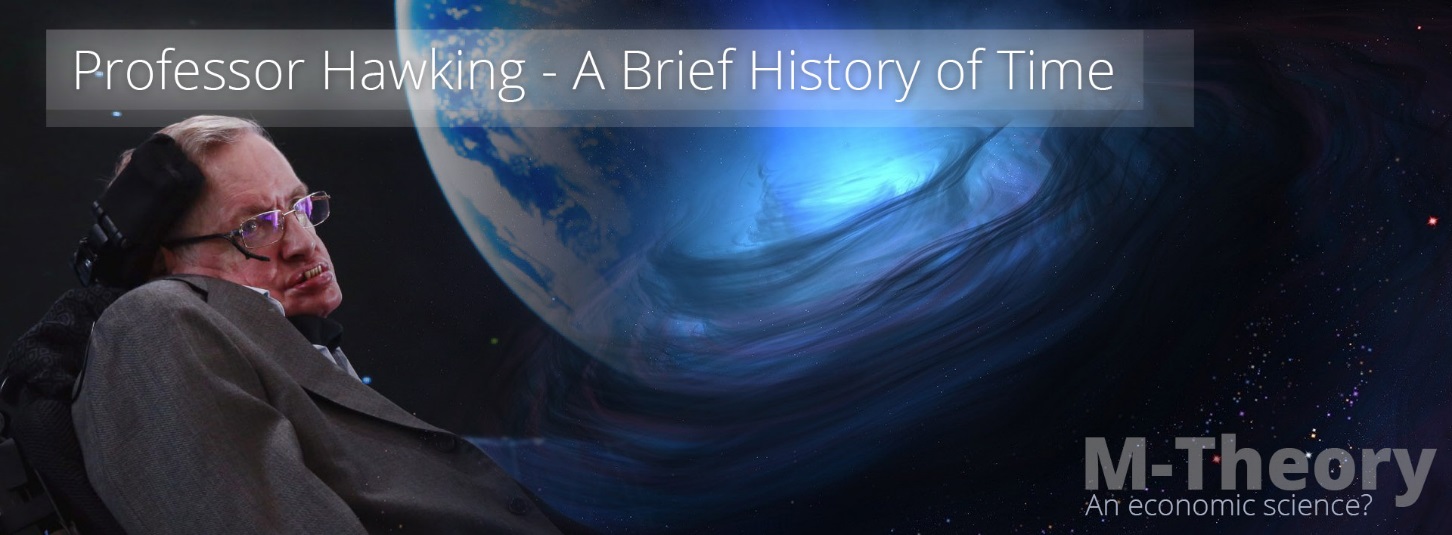
Professor Stephen Hawking’s best-selling book ‘A Brief History of Time’ has sold more than 10 million copies. In chapter one Hawking informs us of the basic ingredients for a good theoretical model. These pointers/guidelines have greatly improved M-Systems, that now exists as a set of systems and laws, with few arbitrary elements. Hawking says…
“A theory is a good theory, if it satisfies two requirements…
1. It must accurately describe a large class of observations on the basis of a model that contains only a few arbitrary elements.
M-Systems describes many business and economic models, from companies in locations of abject poverty to the biggest of businesses and the total global economy within 10 simple cubic financial dimensions and in place of arbitrary elements are laws.
2. It must make definite predictions about the results of future observations.”
M-Systems was inspired in 2011 to make predictions and shape the future, by fulfilling the criteria of a quote from professor and writer Isaac Asimov…
“You may not predict what an individual may do, but you can put in motion, things that will move the masses in a direction that is desired, thus shaping if not predicting the future.”
The M-Systems dedicated to this task are Systems 12. S-World UCS, 13 USC Voyagers and in particular 14 Angel Cities 1 to 5, which creates five future earth simulations from 2020 to 2080 and works backwards to plot paths to our real-world. To be followed by S-World companies in our time, paying due respect to Feynman’s sum over histories and Hawking’s description of Light Cones in ‘A Brief History of Time’ chapter 2 ‘Space and Time.’
M-Theory, an Economic Science?
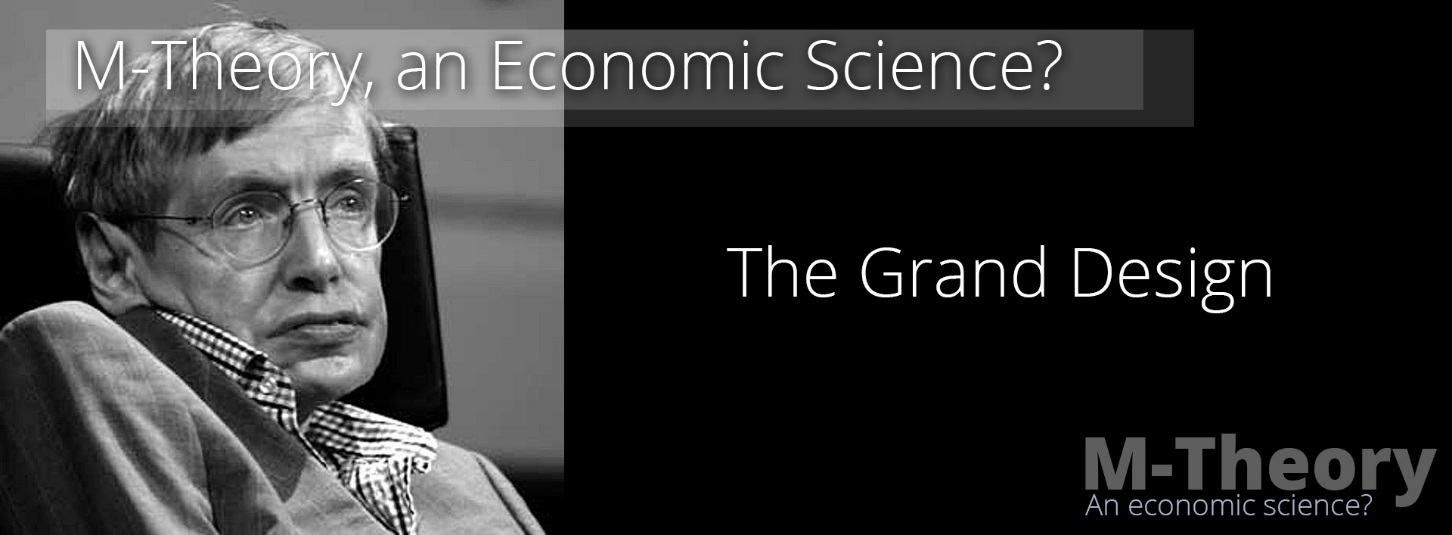
In M-Systems, we create a digital economic network, virtual in design and entangle its structure with conditions and laws found in nature as described by M-theory. But why would we do this? And can M-theory be the foundation for an economic and business science?
In Professor Hawking’s recent TOE (Theory of Everything) book ‘The Grand Design’ co-written with Leonard Mlodinow in 2010, Hawking and Mlodinow presents a very simple but very solid thread for why following the laws of nature as described by M-theory would be an advantage.
“The laws of nature are meant to economically compress a number of particular cases into one simple formula.”
When designing a system for oneself, one has an infinite amount of options. And each is its own theory, which may or may not work out the way one planned. By following the laws of nature one has not only a road map of sorts, one is benefiting from billions of years of fine-tuning. And due to that fine-tuning the components in the system are economically compressed. So, all parts of the system work well together, even if there was no strict plan for such by the designer.
One will be amazed at just how many ripple effects run through this system and how many synergies there are. So many things just seem to fall in place after adopting the M-theory influenced model.
To conclude this series on the writing of Professor Hawking, again from the Grand Design comes the notion that…
“Though that is distasteful to some, scientist must accept theories that agree with experiment, not their own preconceived notions.”
So, the bottom-line is simple…S-World is a business and economic theory. However, until it is massive, it is only a theory of business. Thus, the benchmark is set. When S-World becomes massive, scientists who disagree with the notion of “M-Theory, an economic system?’ will need to re-assess. Every dollar made up to that point and past that point is a small experiment that agrees with the theory.
Dr Amanda Peet & The Professors
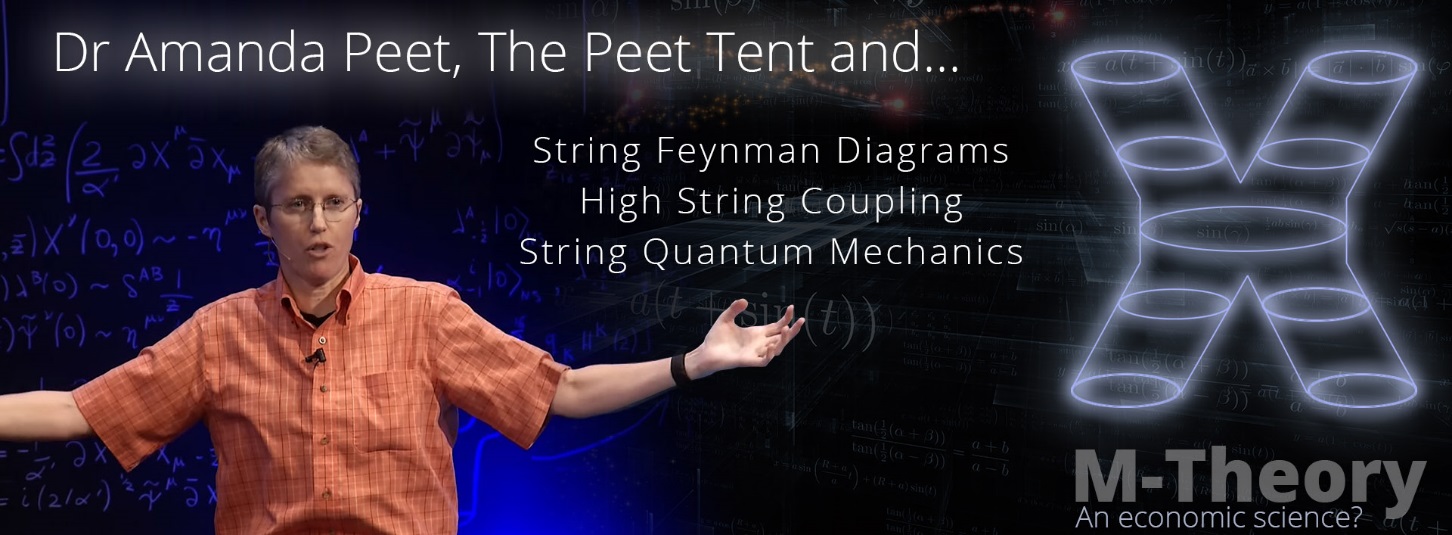
In addition to Professor Hawking, the following professors all inspired one or more sections of M-Systems. The numbers in brackets are links to S-World and M-Systems sections the professors influenced.
In 2011, Isaac Asimov [1, 2], Edward Lorenz [1], Benoit Mandelbrot [1] & Garret Lisi [1, 2]
In 2012, Brian Cox [1], Brian Greene [1, 2, 3] & Amanda Peet [1, 2, 3, 4, 5, 6, 7, 8],
in 2016 Michael Green [1, 2,], Leonard Susskind [1, 2], Stephen Hawking [1, 2, 3, 4, 5, 6, 7, 8, 9, 10] James Gates [1, 2, 3], Leonard Mlodinow [1], Edward Witten [1, 2, 3] & Giovanni Camelia [1].
In 2017 Andrew Strominger, [1, 2] Cumrun Vafa [1, 2], John Nash [1]
Whilst every one of the above are my physics heroes, alongside Stephen Hawking the physicist with the most systems attributed to her work is Dr Amanda Peet, originally from New Zealand and now a professor at the University of Toronto in Canada.
Initially in 2012 in the ‘The Network on a String’ in Chapter 1 CFM and POP Analogies (part b), I referenced Dr Peet’s lecture ‘string theory for the scientifically curious’ and her presentation of a string Feynman diagram (seen top right). This lead to the desire to simulate the effect, which was to make quantum uncertainty manageable by adding a system that could accept any financial result from a company. This point stuck in my subconscious and in early 2016 it manifested itself as The Peet Tent. From which came the GGW String and the idea that The Susskind Boost was a shape of a string and S-World was that string. Which when added together create the effect that no company that has used our financial systems correctly could fail financially.
This idea to treat the network expenditure as a shape, made a lot of pieces fit together and is now the fundamental M-System 0. The GGW-String, which is common to all systems.
Recently, from Dr Peet’s lecture ‘string theory Legos for black holes’ Peet (and Edward Witten) introduced me to string coupling, which enabled me to entangle with the fundamental chaos theory base mathematical principle; ‘The POP investment principle’ with string theory to create the powerful POP Super Coupling . Which extended into the ten-cubic-financial-dimensions of Angel POP. The notes and workings for these points have been written in great detail within: M-Systems: Super Coupling and Angel POP for Dr Amanda Peet.
Angel Theory Part 1
M-Systems
Chapter 2
From the GGW-String to The Peet Tent
M-Systems 0 to 6
M-System 0: The GGW-String
M-System 1. S-World Villa Secrets, S-Web & the TFBMS
M-System 1. The S-Web ‘super simple’ CMS
M-System 1. The S-Web ‘out the box’ Framework
M-System 1. S-Web’s Villa Secrets Mobile
M-System 1. The TFBMS AI
M-System 1. Villa Secrets Network – Google, Mandates, and Shared Operations
M-System 1. Villa Secrets Network – Start-up Costs, The GGW- String and POP
M-System 1. Villa Secrets Network – Africa, California, & The World
M-System 1. We Get Experience Africa for Free
M-System 2. The M&B String (M⇔Bst) & (Ast⇔Bst)
M-System 2. The Mathematics of Ripple Effects
M-System 3. The Susskind Boost
M-System 3. Planck Cubits – Network Credits
M-System 4. The Peet Tent, MCQPS & QSF
M-System 4. Quantum Safe Forecasting (QSF)
M-System 0: The GGW-String – Einstein’s search for A Theory of Everything
Influencers: Albert Einstein – Sir Isaac Newton – Brian Green – Michael Greene – Edward Witten & Others
# String Theory / M-Theory / Networking / Economics / Fund Raising / Business / Philanthropy
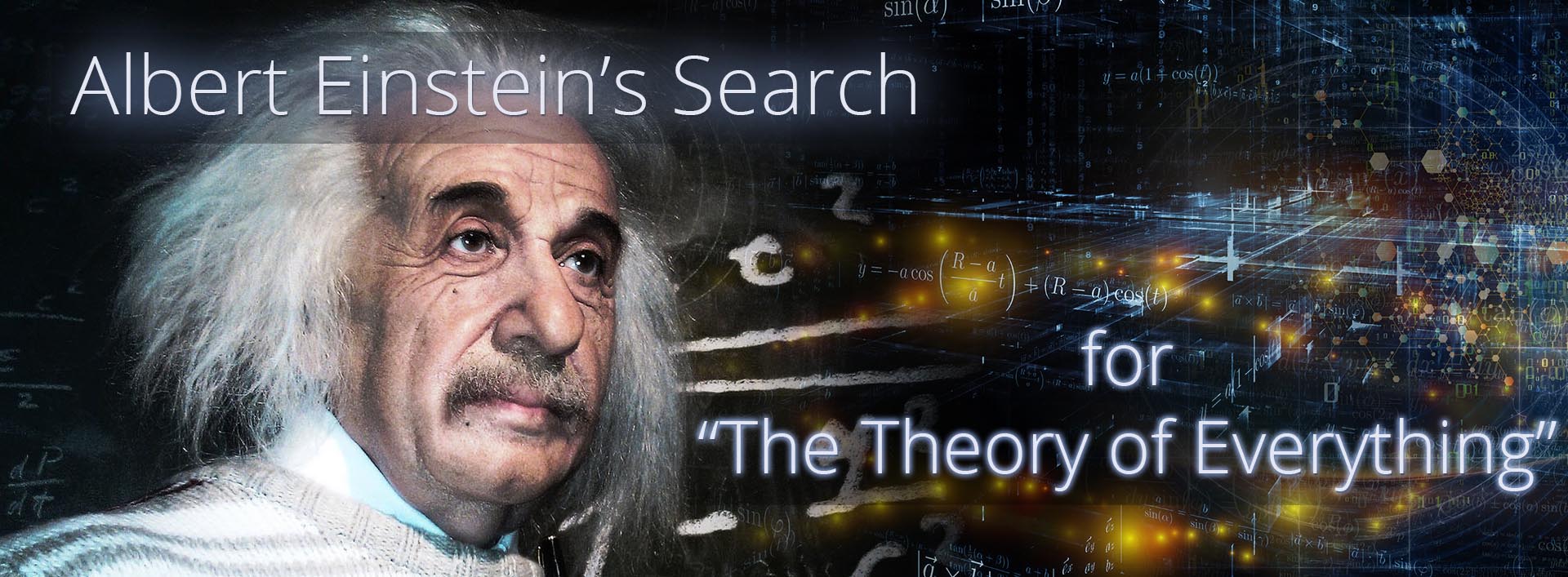
In 1905 Albert Einstein proposed his beautiful equation E = mc2 (Energy = mass times the speed of light, squared) and ‘special relativity’ regarding the relationship between space and time.
Two years later Einstein started a quest to better Sir Isaac Newton’s theory of gravity and… 13 years later Einstein’s new theory was completed and named ‘general relativity’ or Einstein’s theory of gravity.
Einstein’s theory differed from Newtons in one key aspect, where Newton explained our planet’s stable orbit around our sun being due to our earth being attracted to our sun’s mass. Einstein’s theory proposed that the sun creates a warping of space and time (like putting a big bowling ball on a trampoline) and the earth’s orbit around the sun… is in fact the earth moving in a straight line across the warped space the sun creates (as may be simulated by a while by rolling a coin around the circumference of the trampoline).
After Einstein published his theory of gravity he started a new quest… the search for a Theory of Everything, a way to add the force of electromagnetism (which makes electricity) to his theory of gravity. But sadly, Einstein would spend the next 30 years working on this search without success.
One reason for Einstein’s lack of success was that despite winning a Nobel Prize for his 2005 work on the photoelectric effect in the new discipline of quantum mechanics, in his later years, Einstein rejected quantum mechanics as its inherent jitteriness and unpredictability was at odds with his smooth and certain theory of gravity.
Today both Einstein’s theory of gravity (general relativity) and quantum mechanics are considered as the founding pillars of modern physics and a theory of everything is how to unify the two disciplines.
About 15 years after Einstein’s passing, a new consideration of how one may achieve this goal started to emerge called String Theory, which in 1995 developed in to M-Theory.
M-System 0: The GGW-String – String Theory, and the origin of M-Theory
Influencers: Pythagoras – Brian Green – Michael Greene – Edward Witten –Amanda Peet – Leonard Susskind Stephen Hawking – James Gates – John Schwarz.
# String Theory / M-Theory / Networking / Economics / Fund Raising / Business / Philanthropy
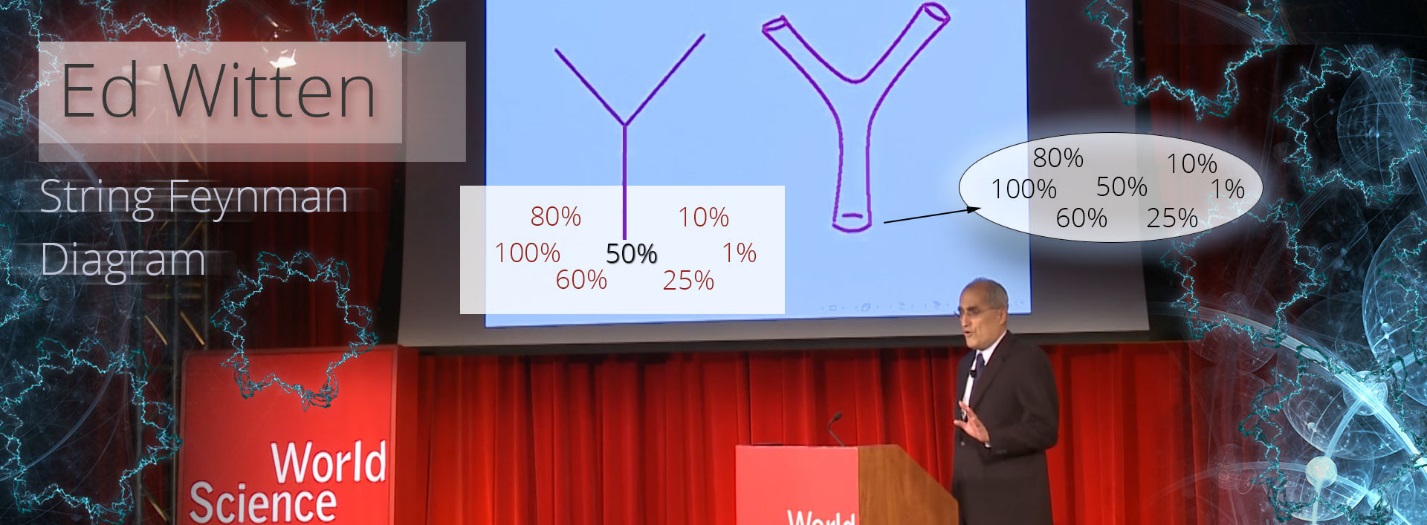
Professor Edward Witten – On the Shoulders of Giants
String Theory was discovered in the late 1960s by pioneers such as Professors Leonard Susskind, Michael Green & John Schwarz. However, a fundamental quality of the theory dates back thousands of years and was the first example of theoretical physics.
“According to legend the first mathematical formulation of what we call a law of nature dates back to Pythagoras, circa 580 to 490 BC. Who is said to have discovered the numerical relationship between the length of the strings used in musical instruments, and the harmonic combinations of the sounds” (By Professor Stephen Hawking).
The fundamental principle of string theory is that, instead of the smallest components within atoms being individual particles, particles are not points but patterns of vibration that have length but no height or width, like infinitely thin pieces of string, and that our universe is made up of these strings, which have many different frequencies and shapes. The different shapes of the strings form different particles within atoms. For instance, one shape creates a particle of light and another shape creates gravity.
Mathematically string theory is hard to master. However, when you break it down as a theory that can unite the uncertain quantum behaviour of atoms with the smooth and steady results from general relativity, it comes down to just one thing which we see presented in the picture above by the father of M-theory professor Edward Witten.
This point is the subject of M-System 4 The Peet Tent. But in brief, on the left in position 1 we see a standard Feynman diagram as used in the standard model of particle physics, which as inferred by the percentages seen can only accept a precise figure, shown as ‘50%,’ whereas on the right in figure 2 we see an oval shape at the bottom of the ‘Y.’ This is a closed string that is circular, both ends of the string meet creating an oval, within which all results are accepted.
Imagine it’s a vacuum cleaner. On the left is a very thin nozzle used for getting into nooks and crannies and on the right, a wide nozzle for sucking up maximum dust particles. This wide nozzle shape is the quality of string theory that unites the quantum and the relativity results. It is what makes string theory the most economical set of mathematics ever created.
M-System 0: The GGW-String
Influencers: Brian Green – Michael Greene – Edward Witten & Others
# String Theory / M-Theory / Networking / Economics / Fund Raising / Business / Philanthropy
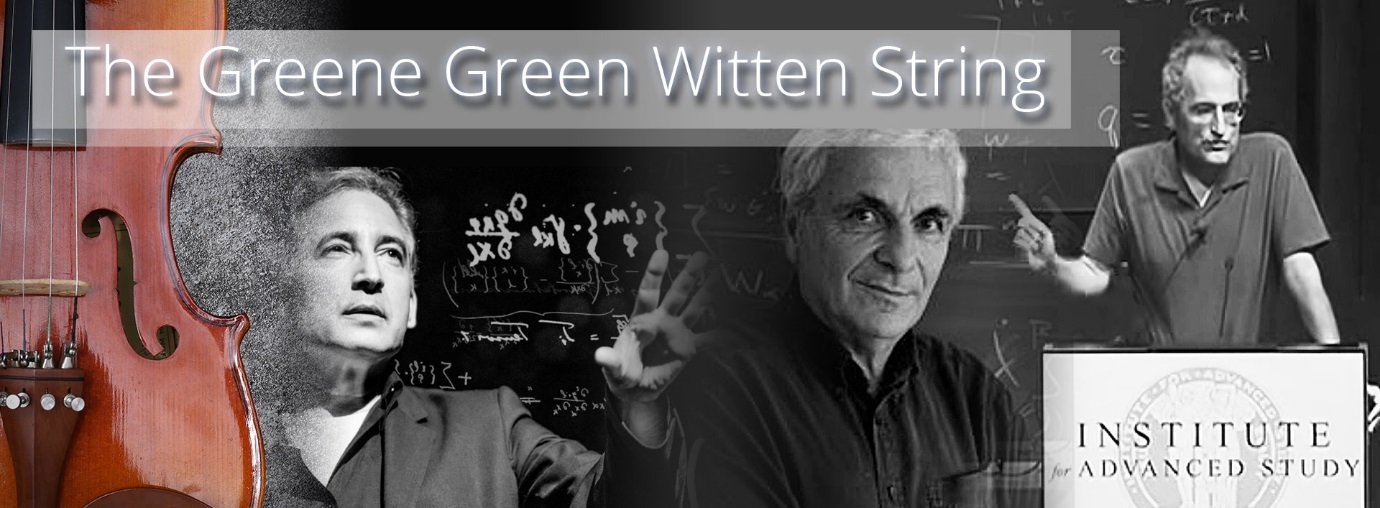
The GGW-String, S-World, and The Sienna Foundation are all the same entity.
String Theory is a discipline of particle physics. It is the idea that all the particles and forces in nature are created by different shapes and vibrations of tiny strings. In String Theory one such shape creates gravity and another would create a photon (a particle of light). In M-Systems, the GGW-String changes its shape to achieve different objectives.
The GGW-String is the S-World economy, energized by every company in the S-World network, contributing financially to it. And how it spends the money can be considered as different shapes of a string.
The current ‘Villa Secrets’ model sees 25% of the gross profit of each company destined to the non-profit The Sienna Foundation (S-World). This organization is the GGW-String and how it spends the money can be considered as different shapes of a string.
For instance, M-System 3 ‘The Susskind Boost’ dictates a shape where the money a company contributes is spent on boosting that company’s individual profitability.
Whereas in M-System 4 ‘The Peet Tent’ we see a different spending pattern (shape) that boosts the profitability of weaker strings.
One of the main purpose of the GGW-String is to generate as much revenue for special projects as possible. This said often and especially in the early years, the best way to achieve long term objectives is to make the network as profitable as possible in the first instance.
However in general, since the beginning of this project back in 2011, this gathering of money and the clever spending of same for philanthropic, ecological, conservation, scientific, and social benefit has been the ultimate objective of the network; originally described in 2001 simply as ‘Give Half Back,’ influenced at the time by the progressive charity idea behind The Bill & Melinda Gates Foundation.
M-System 0: Greene, Green Witten & others
Influencers: Brian Green – Michael Greene – Edward Witten & Others
# String Theory / M-Theory / Networking / Economics / Fund Raising / Business / Philanthropy
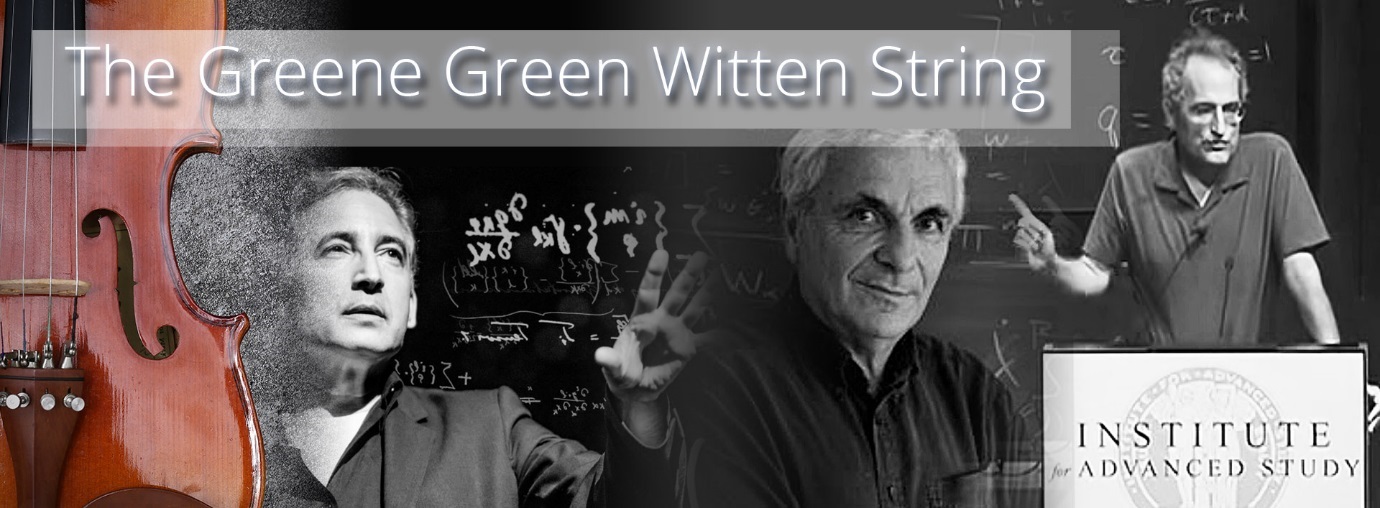
The journey to the GGW String was influenced by several professors, including Brian Greene, Michael Green & Edward Witten.
Initially in 2012 Professor Brian Greene’s excellent entry level documentaries including; ‘The Elegant Universe,’ Part 3 – Welcome to the 11th Dimension provided a door way to the basics of string and m-theory.
Not long after I saw another documentary, this time the Horizon production ‘How Small is the Universe’ and within a section from; pioneer of string theory Professor Michael Green, who describes sting theory as.
“The characteristic of a string is that it can vibrate, and the different modes of vibration are like notes, seen as different kinds of particle.”
But when you are down to this scale, you may have the whole universe on your hand as this thing that we think of as the smallest consistence, may in fact be the thing that contains us all.”
This concept lead to four years of considerations about how string theory could be ‘the thing that contains us all,’ until 2016 when with this paradox in mind I created the Susskind Boost and the Peet Tent and started to see S-World as a string itself, and each new company would be another string, until we reached Angel POP, where S-World could be the thing that contains us all.
The eureka moment occurred whilst watching, Professor Ed Witten’s; “On the Shoulders of Giants” lecture, when ay the very end, he
“one of the shapes of the vibrating string is a graviton, which gives us gravity for free,”
This was rather obvious, if all vibrations make different particles, of course one would be a graviton, but until Witten spoke his words I did not fully get it. As soon as I did ‘get it’ I realised that The Sienna Foundation, (S-World) was a string, and its spending pattern was different shapes.











Leave a Reply
Want to join the discussion?Feel free to contribute!